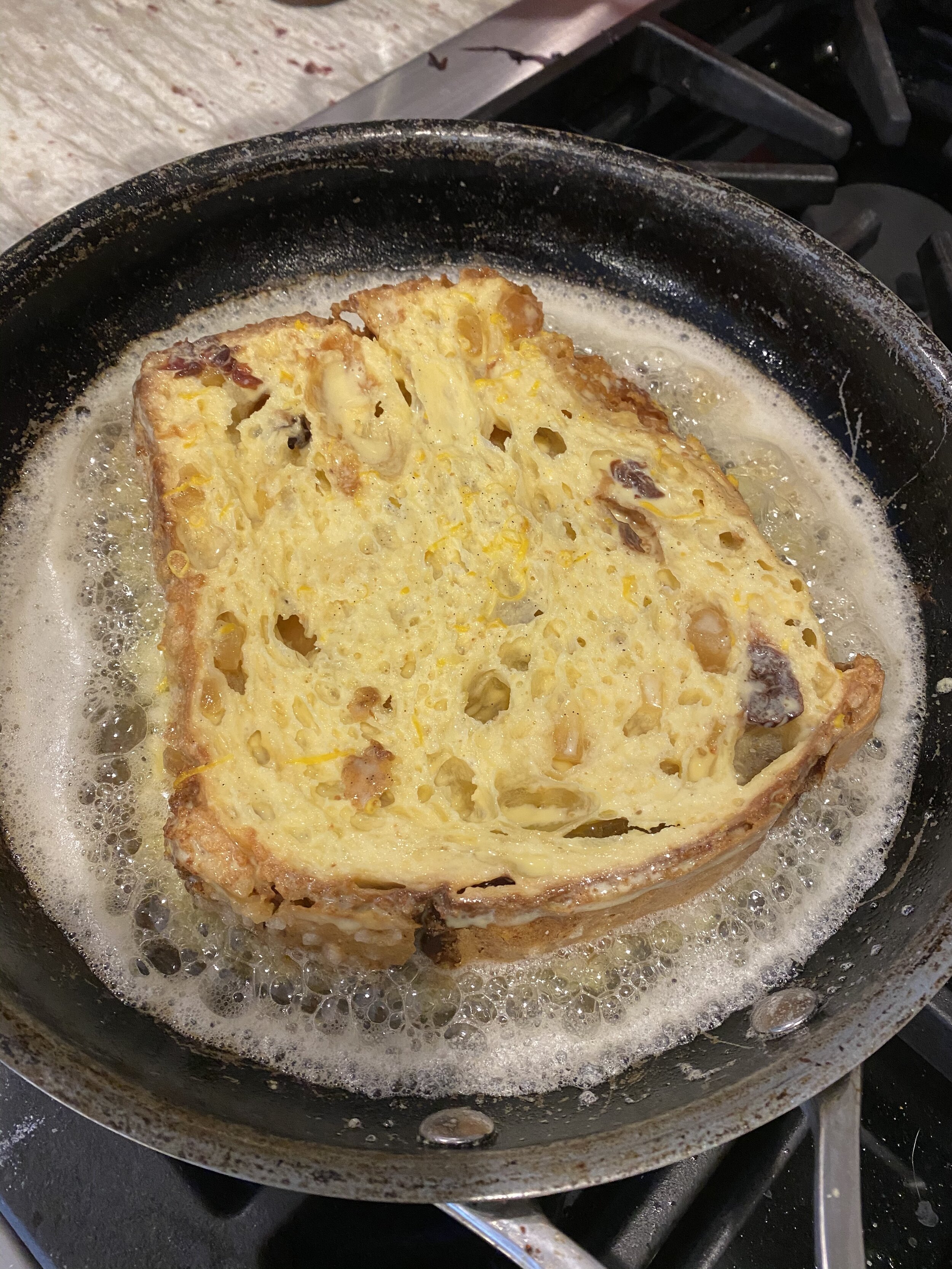Easy Sourdough bread
My favorite sourdough bread is the Basic Country Bread a la Tartine, but It is time consuming. I have been trying to make a cheat version, with the same good result. This is the closest I have been able to get to it. And I’m very satisfied with the result.
Makes 2 loafs.
Ingredients:
Leaven:
3 tablespoons (55 g) sourdough starter
150 g water
140 g all-purpose flour
25 g whole wheat flour
Bread:
250 g leaven - save the rest as your new sourdough starter
710 g water
800 g all-purpose flour
200 g whole wheat flour
20 g salt
50 g water
Directions:
Feed your starter the night before you want to bake.
Day 1 morning
Mix the ingredients in a medium bowl, and let it sit covered on the kitchen counter for 7-8 hours. To test leaven's readiness, drop a spoonful into a bowl of room-temperature water. If it sinks, it is not ready and needs more time to ferment and ripen. If it floats, it's ready to use.
Save your leftover leaven. It will be your starter/sourdogh for next time you bake. Read here how to feed and keep a sourdough starter.
Mixing the dough - 5pm day 1
Pour the warm water into a the bowl for your stand mixer, adding leaven, stir to disperse. Add flours and mix dough until no dry flour remain. Let rest covered for about 30 minutes. Add salt and remaining 50 grams warm water, and head the dough for about 5-6 minutes. Transfer the dough to a medium plastic container or a glass bowl. Cover with lid or kitchen towel. (I use a dough-rising bucket like this. Let the dough rise for about 2-3 hours.
Shaping the dough - 8-9 pm day 1
Gently pull the dough out of container, onto an un-floured surface, using a dough spatula. Lightly flour the top of the dough and use a bench knife to cut the dough into 2 equal pieces. As you cut the first piece, use the bench knife to flip it over, so the floured side now rest on the work surface. Do the same with the second piece of dough.
While working with the dough you want to incorporate as little flour as possible. Work each piece into a round using scraper and one hand. Tension will build as the dough slightly anchors to the surface as you rotate it. By the end, the dough should have a taut, smooth surface. Dust tops off rounds with flour, cover with a tea towel, and let rest on the work surface for 20 to 30 minutes.
The final shaping:
To form the loaf's, carefully turn the dough onto a lightly floured surface with the floured side down, using the bench knife. Now the underside is facing up. Be careful not to deflate the dough. This final shaping builds up tension inside each loaf, so it holds its form and rises substantially when baked. This is called "oven spring."
Fold the third of the dough closest to you up and over the middle third of the round. Stretch out the dough horizontally to your right and fold this right third over the center. Stretch the dough to your left and fold this third over the previous fold. You are now starting to get a neat package. Stretch out the third of the dough farthest from you and fold this flap toward you, over the previous folds, and anchor it in place with your fingers. Then grab the dough nearest to you and wrap it up and over, while rolling the whole package away from you, that the smooth underside of the loaf now is on the top and all the seams are on the bottom. Let the shaped loaf rest on the counter for a minute. Fold the other loaf the same way.
Line two baskets with clean tea towels generously dusted with rice flour. These bowls will hold the fermenting dough overnight in the fridge to proof. Using the dough scraper, transfer each round to a basket, smooth side down, with seam centered and facing up. Cover the dough loosely with tea towel, and place it in a large ziplock bag - do not close the bag. Let the dough rest in the refrigerator overnight.
Baking the Bread - day 2.
Pull the loves out of the refrigerator, removing the bowls from the ziplock bag. Let the bowls on the kitchen counter while you preheat the oven and dutch/French oven to 500℉ (260℃), with rack in lowest position.
Flip one bread into hot dutch/french oven. Score top twice using a razor blade matfer lame. Cover with lid. Return to oven, and reduce oven temperature to 450℉ (232℃). Bake for 20 minutes.
Carefully remove lid and continue to bake until crust is deep golden brown, 20 to 25 minutes more.
Transfer loaf to a wire rack. It will feel light and sound hollow when tapped. Mix the topping and spread it on top of the hot crust, then let the loaf cool. Letting the bread cool, is the hardest thing.
To bake the second loaf, raise oven temperature to 500℉ (260℃), wipe out dutch/French oven with a dry kitchen towel, and reheat with lid for about 10-20 minutes.
Enjoy!











